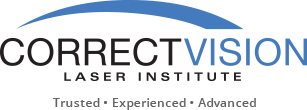4 LASIK Alternatives for Patients Who Don’t Qualify
 LASIK is a popular form of laser vision correction, but the procedure isn’t right for everyone. If you have thin corneas, corneal disease, extremely dry eyes or a high degree of refractive error, your eye doctor may tell you that you’re not a good candidate for the surgery. Participating in contact sports or working a high-impact physical job may also disqualify you for LASIK. However, there are LASIK alternatives available should you still wish to correct your vision with surgery.
LASIK is a popular form of laser vision correction, but the procedure isn’t right for everyone. If you have thin corneas, corneal disease, extremely dry eyes or a high degree of refractive error, your eye doctor may tell you that you’re not a good candidate for the surgery. Participating in contact sports or working a high-impact physical job may also disqualify you for LASIK. However, there are LASIK alternatives available should you still wish to correct your vision with surgery.
Four LASIK Alternatives Available For You
1. Conductive Keratoplasty (CK): This noninvasive procedure works best to correct the mild to moderate farsightedness that many people find setting in when they reach age 40. Instead of a laser, the eye surgeon uses small pulses of radio frequency to generate heat and tighten the peripheral cornea. This changes the shape of the corneal surface to adjust the way that light behaves when it enters the eye. Studies are being conducted to determine if CK may also be useful for correcting astigmatism. However, the effects of this type of surgery may not be permanent.
2. Photorefractive Keratectomy (PRK): For patients with thin or weak corneas, PRK provides an alternative that doesn’t involve the creation of a corneal flap performed in LASIK surgery. In a PRK procedure, the outer epithelial layer of the cornea is completely removed before the eye surface is reshaped. Because no flap is created, PRK may be more practical than LASIK if your job or lifestyle puts you at risk for flap displacement. The trade-off is that recovery from PRK takes much longer. It can be three to seven days before the corneal layer regenerates, and patients may not experience optimal vision from anywhere between three to six months.
3. Refractive Lens Exchange (RLE): Extreme farsightedness and age-related presbyopia in people over age 45 may be corrected with RLE, a procedure similar to cataract surgery in which the natural lens of the eye is removed in favor of an artificial replacement. Some people who are experiencing the early stages of cataracts also opt for RLE surgery because it may be able to preserve a better quality of vision than the standard “wait and see” procedure.
4. Visian Implantable Collamer Lens (EVO Visian ICL): Implantable lens surgery literally implants a contact lens, also called a phakic intraocular lens (IOL), in front of or just behind your iris. In this procedure, no part of the cornea or the eye’s natural lens is removed. Your eye doctor simply creates a small incision and inserts the lens. Visian is one type of IOL that can help correct vision in patients ages 21 to 45 who suffer from extreme nearsightedness, thin corneas or dry eyes. Unlike other procedures, this type of surgery can be reversed in the future if need be.
How to Determine Which of These LASIK Alternatives is Right for You
These LASIK alternatives can improve your vision at most stages of life. Talk with your eye doctor to determine which method is best to address your condition. Familiarize yourself with the benefits and risks of each procedure before making a final decision.
Do You Need More Information Regarding LASIK Alternatives?
CorrectVision Laser Institute is one of Florida’s most advanced vision correction practices with extensive experience in LASIK. Our goal is to open your eyes to the world of great vision by offering unparalleled expertise and the most advanced technology available. Contact us today for a consultation with one of our South Florida eye specialists, located in Hollywood, Weston and Pembroke Pines!

